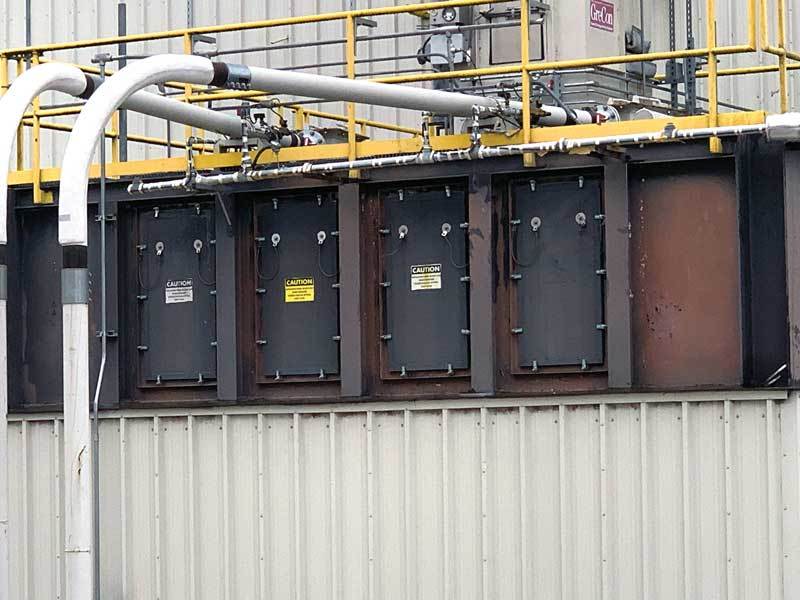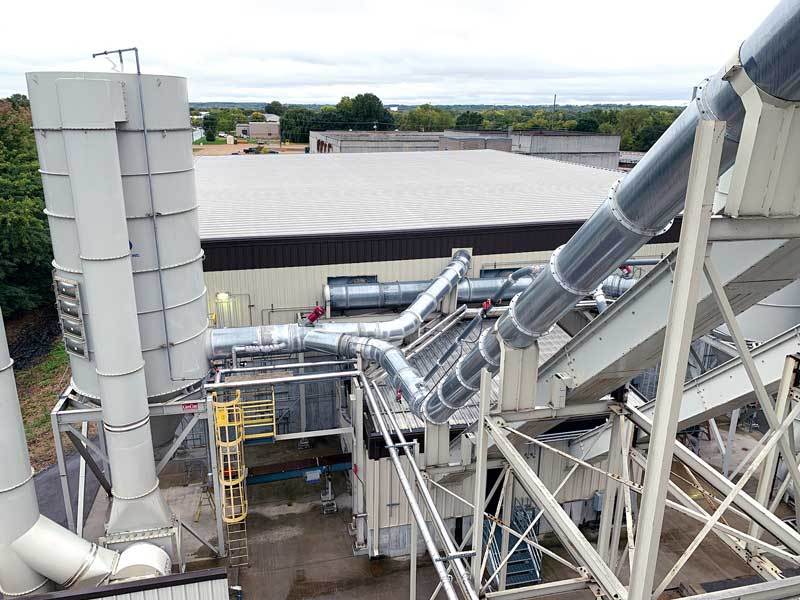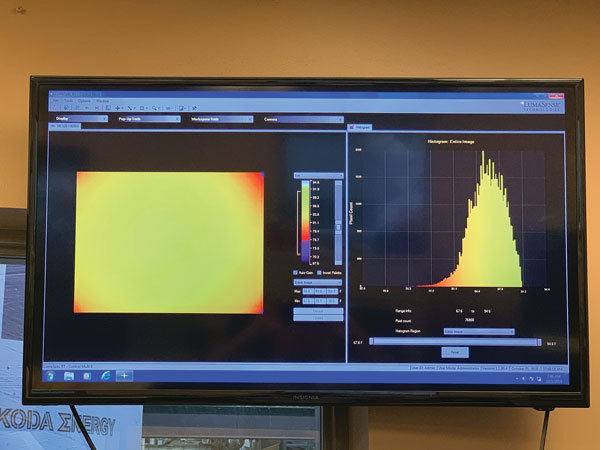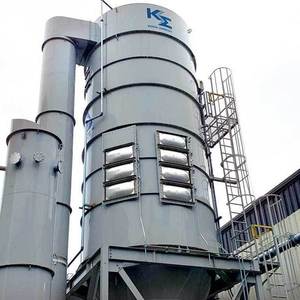Combatting Combustible Dust Hazards
















PHOTO: STACY COOK
October 28, 2019
BY Stacy Cook
One of the problematic aspects of handling biomass in a power generating or fuel production process is the amount of combustible dust that is often present in the material. The challenges posed by combustible dust are not unique to facilities like Koda Energy, but are also present in grain elevators, flour mills and many other processes that create or release dust from plant matter. Over the years, the frequency of fires and dust explosions in all these types of operations have been reduced, but not eliminated. Much more can be done to reduce the property damage and risk to personnel by mitigating many of the hazards that are inherent in the processing of biomass materials.
In April 2013, Koda Energy’s 23.4-MW biomass cogeneration plant in Shakopee, Minnesota, experienced a fire and explosion in its fuel receiving and storage system that caused significant property damage. We were extremely fortunate that nobody was hurt. An exhaustive investigation of the event’s causes was undertaken, during which we needed to look very closely at all aspects of the fuel handling operation relative to airborne dust creation and hazard mitigation. Ultimately, the decision was made to perform a total redesign of the fuel receiving and storage system, incorporating new systems and strategies to improve the safety and durability in the new design.
A dust explosion requires five ingredients to occur—fuel, oxygen, a combustible atmosphere (suspended dust or vapors), an ignition source and containment. We focused on removing as many of these ingredients as feasible from each part of the new system, and have had no further incidents since the new system came online in January 2014. Some of the elements that we incorporated in the new design are as follows, along with additional items for consideration by other facilities.
Eliminating/Limiting Potential Sources of Ignition.
• An ignition control program that includes no smoking areas and signage anywhere combustibles are stored or handled, a hot work permit system with procedures that identify when and where it is safe to cut, grind and weld.
• Equipment must be grounded, with grounding straps between each piece of equipment to prevent static electricity buildup and discharge that can ignite fuel or dust.
• A minimum of Class II division II electric motors. We use Class II division I wherever combustible dust may be present in the fuel system at Koda Energy.
• Procedures to prevent exposure to external hazards delivered into your system, i.e., a hot load.
• Prevention of excessive friction heating in rotating equipment (bearing temperature monitoring can alert you to a dangerous condition developing). At our facility, we oversized screw and drag conveyances, so they run slower and have less potential to create excess friction heating. This costs a little more, but creates additional capacity (and equipment will not need to run as hard).
Preventing Combustible Atmospheres from Developing.
• To limit dust particle size segregation, reduce the distance the material is in free fall. In our system, we shortened the uncontrolled vertical drop height of the fuel. If the dust isn’t airborne, the atmosphere will not become combustible. The initial drop from the back of the trailer is roughly three feet, with extendable and retractable chutes with integrated dust collection in some areas. Vertical chute transitions between pieces of equipment were kept short.
• Remove dust as it becomes airborne. Koda Energy installed extensive dust collection systems—per minute, our fuel receiving bay has 60,000 cubic feet of fresh air entering the space from gravity louvers as the dusty air is removed from the building, and point collection on each retractable chute and at the base of product bin piles to remove any dust motes created.
• A documented housekeeping plan will keep you on track to keep potential airborne dust layering at a minimum when it is thick enough to obscure the color of the substrate material. Excessive dust layering can get blown into the air and cause a secondary deflagration event. Limit the number of horizontal surfaces in your system, and prevent excessive dust layers from accumulating on ledges and equipment.
Allow pressure to be released to prevent containment. In dust deflagration, the expanding gases can cause a vessel or building to burst or explode and create airborne projectiles. This pressure needs to be released safely.
• Pressure release panels/deflagration venting should be installed in a manner that doesn’t direct the blast toward other buildings or areas containing combustible dust, but to areas not populated by people. The panels should be firmly tethered to the structure, so they don’t become airborne projectiles themselves.
• A weak point can be designed into the enclosure whether it be a tank, silo or building, so that this part fails while leaving the main structure intact. Some silos are designed with a roof that will let go and release the pressure, so that the remainder of the silo is unharmed in the event of a deflagration.
• Flame arrestors can be installed in conjunction with the deflagration panels, so that open flames are not released when the panels pop open.
• Koda Energy uses open-top designs on several of the new bins so that pressure can’t be contained. The more of the system that can be observed, the less potential for a hidden hazard condition.
If these three elements can’t be eliminated entirely (ignition sources, combustible atmospheres and pressure containment), a system should be designed to be much less likely to experience an incident than many that currently exist in the biomass world. But what about when the unforeseen happens, and an event occurs that creates a fire or beginning stages of a deflagration? When possible, it should be prevented from growing or causing a chain reaction event that will spread through the facility. There are some additional measures that can be deployed to control these situations as well.
Spark and Fire Detection and Arresting Systems.
• In areas where dust is traveling through a duct—perhaps in a dust-collecting or transport system—you may be able to utilize detectors to “see” an ember and a fine-mist water spray system to extinguish the ember while in transit. Our facility uses GreCon detectors in all of our dust ducts, with fine water droplet extinguishment nozzles for sparks. These have been quite effective, especially downstream of our hammermills. The volume of water utilized is enough to put out the ember without clogging up our systems.
• In transition areas where fuel is dropping from one point to the next but not moving as rapidly, Koda Energy also uses spark detection. These detectors have been tied into our process control program to automatically shut down equipment and give alarm to our operations personnel. This stops the fuel from moving and spreading fire, providing an opportunity to activate deluge nozzles to extinguish an ongoing combustion event. The extinguishment can be set to automatic, or activated by remote and local activation, depending on site requirements.
• For feeding storage and metering bins, Koda Energy also has detectors installed, with fine water droplet deluge nozzles for extinguishment. When using a dusty fuel, operators should be careful to not hit the fuel pile with a direct, high-pressure stream of water to prevent the dust from billowing into the air and creating a combustible atmosphere. A gentle application of water is desired—cool and soak, rather than blast.
• Gas monitoring can be used to measure combustion products such as carbon monoxide. At Koda Energy, we use handheld devices once an alarm has been tripped, but active gas monitoring can be installed if desired, and the budget allows.
• At our facility, we use both permanently mounted and handheld thermal imaging cameras to detect heat signatures in bins and equipment where there isn’t a line of sight visual on possible combustion events. This is a good way to monitor critical parts of the process without having people in harm’s way.
• If fuel bins and tanks are relatively small, some type of oxygen displacement to extinguish a fire may be used, though Koda Energy does not, as it’s impractical due to the size and nature of the plant’s equipment. In the right situation, however, steam, CO2, or nitrogen “snuffing” systems may be able to be used to displace the O2 and create a relatively inert atmosphere.
Chain reactions in a combustion event can rapidly spread a fire. This means far beyond the area where it initiated, damaging equipment and buildings throughout the facility. Operators may isolate one system or area from another to prevent this from happening. Koda Energy uses both chemical and mechanical isolation devices in its system, depending on what’s possible in each type of situation.
• For chemical isolation, we use sodium bicarbonate cannons in the very large dust ducts where mechanical isolations would be too slow to react, or not feasible due to size. These atomize a large volume of sodium bicarbonate into the duct as the airflow is being automatically interrupted by the control system (ours are fired when the deflagration vents open). Sodium bicarbonate will help smother the fire, creating water when heated to provide an evaporative cooling effect.
• Mechanical isolation can be created through use of rotary airlocks, double dump valves, backflow preventers, etc. In many parts of our system, whether moving biomass fuel or dust, we use properly designed rotary airlocks as positive isolation devices.
The above strategies are not an exhaustive list of considerations for prevention of another event at Koda Energy, and they are not meant to be all-encompassing. To protect assets and people, operators should use the tools appropriate for their situation—as a plant manager, these are options that I would personally consider when designing a system to minimize risk. The NFPA, FM Global standards, local fire marshals, the state electrical code and insurance companies are good sources of guidance and information when making these decisions, among many other sources.
It may be a cumbersome and expensive process on the frontend to design a system that alleviates the fear of a catastrophic loss, but it is much preferred to picking up the pieces after an event has occurred.
This article is based on opinion and point-of-view. The author and his employer accept no responsibility for the installations of others.
Author: Stacy Cook
President, Koda Energy LLC
scook@kodaenergy.com
www.kodaenergy.com
Advertisement
Advertisement
Upcoming Events





